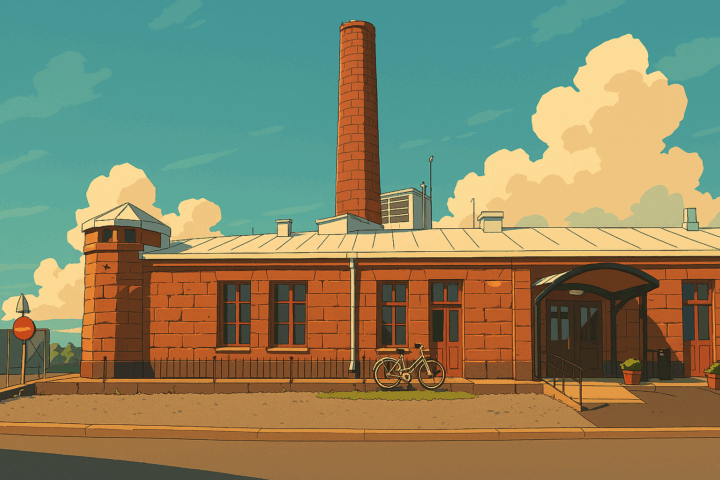History
Hanko Western Harbour was established in 1873. It is the southernmost port in Finland, and due to its location and mild maritime climate, it became the country’s first winter port. For decades, it was also the only port open year-round. At that time, as now, the shortest sea route to Central Europe was a significant competitive advantage. The railway and its own station were completed in Hangö in the same year, 1873, and around these two, the port and the station, the town of Hangö was founded in 1874.
Cape Hanko is part of the Salpausselkä ridge formed during the Ice Age, a long, narrow peninsula that stretches into the Baltic Sea. The entire history of Hanko is intertwined with the sea. Hanko was first mentioned in the route description of Danish King Valdemar II Sejr in the 13th century, as a port called Hangethe. The ancient Finnish name for Cape Hanko is Kumionpää, Seal’s Head. The era of sailing ships and maritime traditions are commemorated by about 650 images, inscriptions, and noble coats of arms carved into the rocks of Hauensuoli, located off Tulliniemi, starting from the 16th century. These carvings were made during the long days when sailors waited in the shelter of the islands for favorable winds to continue their sea voyages. Many famous naval battles have also taken place off the coast of Cape Hanko.

Between 1880 and 1930, over 250,000 emigrants departed from Hanko port to England, and from there to America, Canada, and Australia. These emigrant ships also transported butter, a fact still commemorated by the Butter Warehouse, which also houses the port office. Passenger traffic from the port occurred from the 1870s until World War II and continued to some extent even after the war. Due to its strategic location, Hanko was a focal point of events during World War I, with the port serving as a naval base from 1914 to 1918. During World War II, in early 1940, the Hankoniemi peninsula was leased to the Soviet Union as a naval base in accordance with the peace terms of the Winter War. The lease was set for 30 years, but after the Continuation War, the residents of Hanko were able to return to rebuild their hometown in December 1941.
In recent decades, Hanko has been primarily known for car transportation, though the export of paper, rubber-wheeled cargo, and container traffic have also grown alongside it. At its peak, the port of Hanko handled up to half a million cars per year, mainly to Russia. Approximately 500 people work in the Hanko port area, making it one of the most important employers in Hanko and the surrounding regions. The outer harbor was opened to traffic in 1924, following plans for a port in Tulliniemi that had been in place since the 1860s.
The Koverhar Bay has been mentioned in various historical documents since the 1400s, under different spellings. In 2012, following the bankruptcy of a steel factory, the deep harbor and approximately 500 hectares of land in the Koverhar industrial area in Hanko’s Lappohja were transferred to the City of Hanko and Hangon Satama Oy. The purchase agreement was signed in December 2014. Koverhar is also accessible by railway. The new port serves, among others, bulk cargo customers, as the West Harbor, located in the city center, was unable to accommodate bulk cargo.
